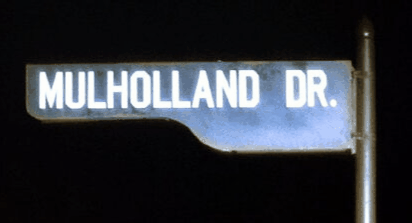Centre Culturel Suisse, Paris, 4th December 2004 – 30th January 2005.
Thomas Hirschhorn’s latest project sees him collaborating with Marcus Steinweg, Gwenaël Morin and his theatre company within the confines of the Swiss Cultural Centre in Paris – an event that’s been drawing biggest audiences in the Centre’s 20 year history. Known for his makeshift altars in peripheral urban areas, it’s surprising to find Hirschhorn at work in the heart of the affluent Marais. Hirschhorn has done his best to draw attention to this fact, promoting the event with a large home-made banner which makes it clear that this not just an installation, it’s an occupation. Inside, the entire building has been transformed into a labyrinthine cooperative pavilion constructed mainly from recycled cardboard held together by asphyxiating masses of masking tape. The deliberate clumsiness of the construction stresses the value of transparency, we see how everything is made and in turn are promised a behind the scenes testimony of Swiss democracy, “destabilizing”, as Hirschhorn puts it “the good democratic conscience.” The primary effect of the space is ‘sculptural’ in a modernist sense. The DIY construction draws attention to the building and its contents as objects, creating architectural contrasts of bulk and buoyancy. On a bigger scale, the predominance of pink, blue and yellow cardboard rooms makes the spaces in the Centre seem claustrophic, uneasy, oppressively energetic and undifferentiated, imbuing a monumental corporate grunge.
As in Hirschhorn’s previous works, the walls are covered with slogans, newspaper and journal clippings, an overabundance of documentation to absorb, ensuring that audiences make at least one return visit. These elements are bolstered by other forms of information provided in each main space: the showroom, the auditorium, the library, the bar, and the TV lounge. The showroom displays a host of hokum objects in cabinets; maps of Switzerland, Swiss flags and tourist paraphernalia predominate. Alongside Hirschhorn presents an assortment of papier mache pie charts. Each space has its own working model train set, each describing an aspect of the Swiss mountainscape in tape; in all an eccentric mix of shrewd political analysis and the kind of ersatz chocolate-box imagery beloved of Swiss nationalists.
Hirschhorn can be seen each day producing a free daily journal Swiss-Swiss Democracy. The photocopied zine contains a series of essays drawn from philosophers including Immanuel Kant, and a transcription of the daily talk given in the auditorium by the Berlin-based philosopher Steinweg. The paper is a model for self-initiated political activism. It functions primarily as an expose of the myth of direct democracy in contemporary Switzerland, a fiction espoused by the head of the Department of Justice and Peace Christoph Blocher, the billionaire leader of the hard-right Swiss People’s Party. Blocher is the main bogey-man of the exhibition, a figure directly attacked and satirised by Morin’s theatre group, much to the consternation of ministers who have predictably threatened to withdraw funding from Pro Helvetia, the Swiss Arts Council.
Hirschhorn more subtly draws attention to the difficulties of implementing direct democracy through a sceptical engagement with the idea of ‘participation’. One monitor displays a video of a ‘bum fight’ – the practice of paying the homeless to battle each other or perform acts of self-mutilation. Two Swiss teenagers are encouraged by a crowd to participate in a prize fight in a suburban garden. The ring is constructed from barbed wire; the weapons consist of things to hand such as metals chairs, a surf board. The fight is brutal and bloody to the end. Such events illustrate that, if left to do what they wish, the majority can easily begin to violate the dignity and rights of minorities and the disenfranchised. Audience interaction has become something of a pre-requisite in much contemporary French art, the naïve belief being that this will ensure the democratisation of culture. Of course, as Hirschhorn demonstrates, this simply isn’t the case when ‘direct democracy’ becomes a means of exploitation, rhetoric destined to satisfy the neo-liberal political agendas of the wealthy and the powerful.


